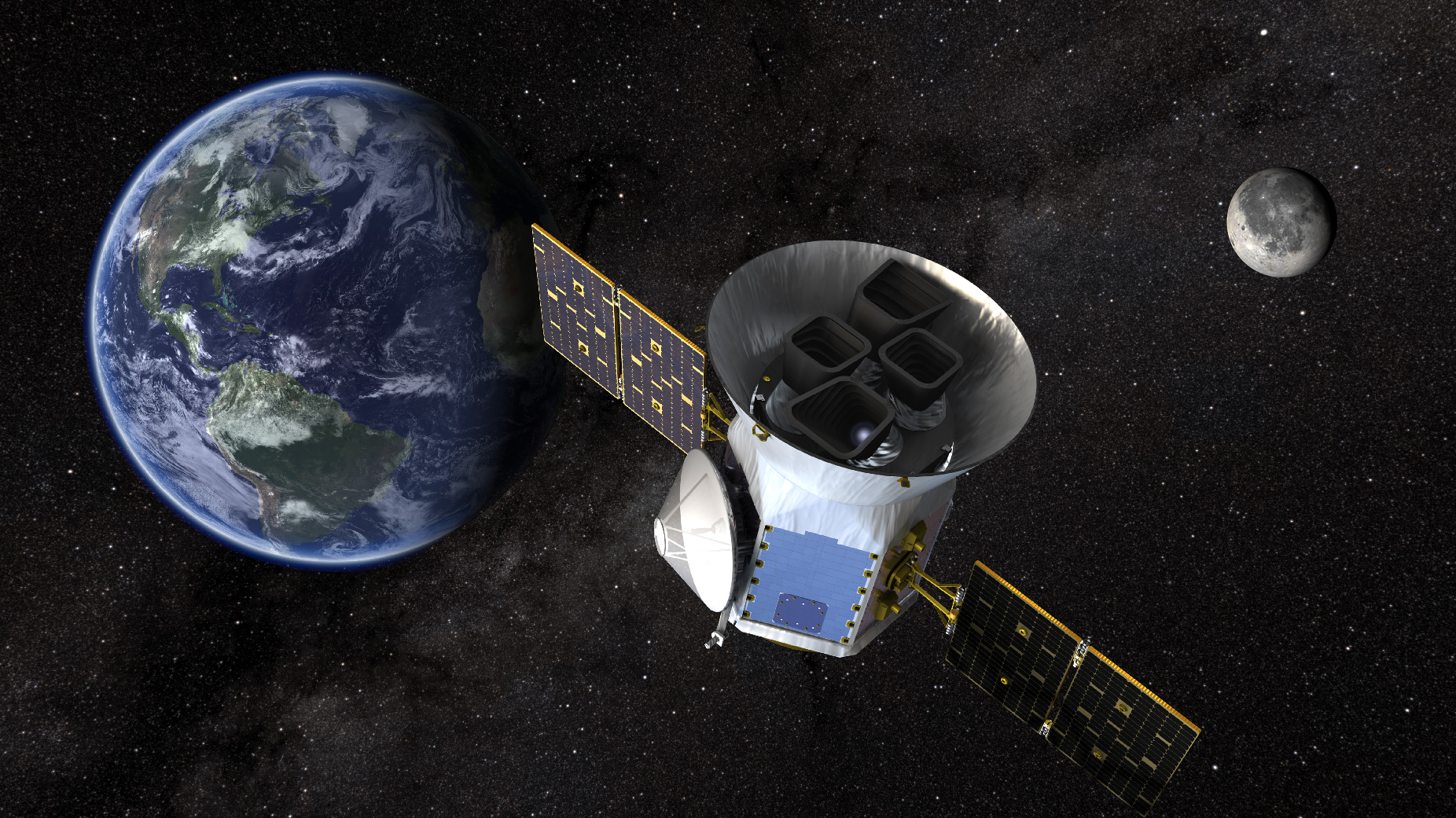NASA’s TESS (Transiting Exoplanet Survey Satellite) mission recently reached its fifth anniversary of service to humanity as it continues to tirelessly scan the heavens for worlds beyond. Dubbed as an all-sky mission, TESS was launched on April 18, 2018, aboard a SpaceX Falcon rocket. During its five years in space, TESS’s four 24 degrees by 24 degrees field-of-view CCD cameras have successfully mapped greater than 93% of the cosmos.
To create its sky map, TESS scans large portions of the sky known as sectors, with each sector encompassing 24 by 96 degrees and taking approximately one month to complete. The size of each sector is approximately one hand’s width and spans from the horizon to the sky’s highest point, also called the zenith, with each full-frame image consisting of 192 million pixels. TESS’s primary mission ended on July 4, 2020, during which time it was able to record each sector once every 30 minutes. This timing has improved during its extended mission with TESS now recording one sector almost 90 percent faster at 3 minutes and 20 seconds.
“The volume of high-quality TESS data now available is quite impressive,” said Dr. Knicole Colón, who is TESS’s project scientist at NASA’s Goddard Space Flight Center (GSFC). “We have more than 251 terabytes just for one of the main data products, called full-frame images. That’s the equivalent of streaming 167,000 movies in full HD.”
“TESS extracts parts of each full-frame image to make cutouts around specific cosmic objects – more than 467,000 of them at the moment – and together they create a detailed record of changing brightness for each one,” said Dr. Christina Hedges, who is the lead for the TESS General Investigator Office and holds dual roles as a research scientist at both the GSFC and the University of Maryland, Baltimore County. “We use these files to produce light curves, a product that graphically shows how a source’s brightness alters over time.”
TESS is currently placed in a highly elliptical orbit around the Earth with its farthest point (known as apogee) at an approximate one-Moon distance from Earth. This allows TESS to orbit the Earth twice for every one orbit of the Moon, meaning it has a 2-to-1 orbital resonance with our Moon. This type of orbit not only allows TESS an unobstructed view of the heavens, but also keeps it free of the Van Allen Belts, and it has been estimated the stability of this orbit could last at least 10 years..
Along with its impressive night sky map, TESS has also confirmed the existence of 330 exoplanets with 6,400 exoplanet candidates as of this writing, using the transit method to locate and identify them, as the spacecraft’s named suggests. Some of the most notable exoplanet findings include the confirmed discovery of TOI 700 d in January 2020, which is an Earth-sized world located within its star’s habitable zone approximately 100 light-years. This was later complimented with the confirmed discovery of TOI 700 e in January 2023, which is also an Earth-sized world located in the star’s habitable zone.


Other key exoplanet discoveries from TESS include GJ 367 b, which is a Mars-sized exoplanet located approximately 31 light-years from Earth, and the triple-planet system of TOI 11, which contains one super-Earth and two mini-Neptunes and located approximately 205 light-years from Earth. Aside from exoplanets, TESS has also observed black holes and hundreds of supernovae, as well.

As stated, TESS completed its primary mission in July 2020 and officially started its first extended mission, which lasted until September 2022. This was when NASA approved a second extended mission, which is currently ongoing and expected to last until September 2025.
With TESS’s orbit allowing it to observe the heavens through at least 2028, what new science will it uncover and how many more new exoplanets will it discover? Could it even be responsible for finding Earth 2.0? Only time will tell, and this is why we science!
As always, keep doing science & keep looking up!

